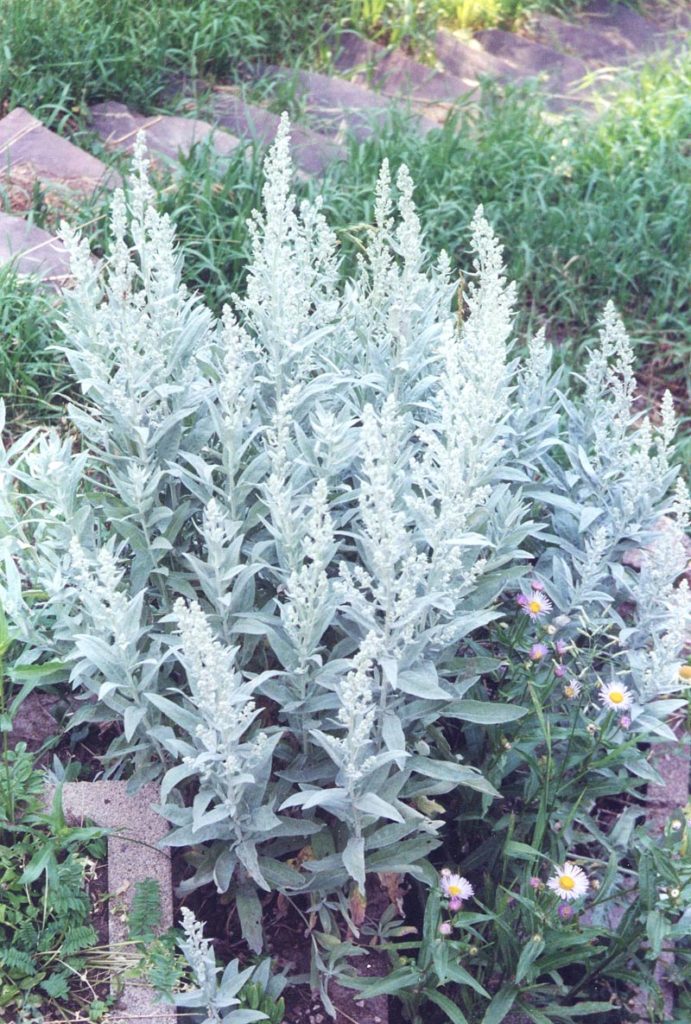Mountain Sage (Artemisia ludoviciana)
By Susan Fernalld, Master Gardener
 A favorite plant of mine is Artemisia ludoviciana (variously called White Sage, White Sagebrush, Western Mugwort, Mountain Wormwood, and other common names). Native to the U.S., it is a tough perennial subshrub (to three feet high) with excellent landscaping potential. Aromatic and hardy (USDA zone 3), and striking because of its light color, and easy to grow, it makes an outstanding landscape plant. It survives quite well in our dry mountain soils, and it has fire-resistant properties. Depending upon the light, Artemisia ludoviciana’s slightly fuzzy white-gray foliage can look silver or blue, and its inconspicuous yellow-white flowers further contribute to interesting textures. To me, this plant lends an aura of the west to our mountain gardens.
A favorite plant of mine is Artemisia ludoviciana (variously called White Sage, White Sagebrush, Western Mugwort, Mountain Wormwood, and other common names). Native to the U.S., it is a tough perennial subshrub (to three feet high) with excellent landscaping potential. Aromatic and hardy (USDA zone 3), and striking because of its light color, and easy to grow, it makes an outstanding landscape plant. It survives quite well in our dry mountain soils, and it has fire-resistant properties. Depending upon the light, Artemisia ludoviciana’s slightly fuzzy white-gray foliage can look silver or blue, and its inconspicuous yellow-white flowers further contribute to interesting textures. To me, this plant lends an aura of the west to our mountain gardens.
Artemisia ludoviciana is plentiful in the wild on rocky, well-drained soil, usually in full to part sun. The best way to obtain this plant is to find a sprig of it growing naturally in your landscape and encourage it with a little supplemental water. Within just a few years, a small weather-beaten sprig will have become a gorgeous 2 x 2 x 2 foot mound. Alternatively, you can mow it to make it become a groundcover. It spreads via rhizomes and seeds, and it can be propagated from root cuttings. It is found in containers at native plant nurseries as well. Transplants are slow to grow for a while.
Search:
Categories
Archives
Additional Resources
Events Calendar
| M | T | W | T | F | S | S |
|---|---|---|---|---|---|---|
| 1 | 2 | |||||
| 3 | 4 | 5 | 6 | 7 | 8 | 9 |
| 10 | 11 | 12 | 13 | 14 | 15 | 16 |
| 17 | 18 | 19 | 20 | 21 | 22 | 23 |
| 24 | 25 | 26 | 27 | 28 | 29 | 30 |
| 31 | ||||||


